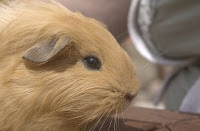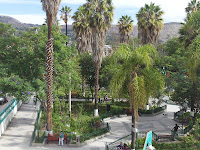The pilot program for women entrepreneurs entitled 'Innovative Strategies for Women to participate in the Digital Economy' stems from a train-the-trainer setup, which required a group of Spanish speaking women leaders to travel to Korea to be trained in website building, e-commerce and e-marketing in English spoken by Koreans! Ruby ~ who has recently returned from Korea ~ has organised a seminar for about 40 Tacna women entrepreneurs at a local private University which is located on the edge of town in a desert like setting. The entrepreneurship faculty is a surprisingly speccy new building.


No sooner do I arrive or I am turned into a presenter and invited to make welcoming remarks (as is the custom here in Peru) alongside the other distinguished speakers. Good thing off the cuff speaking doesn't worry me, but I do have to spend some time preparing what turns out to be a 45-minute presentation slot.
San Pedro de Tacna , or simply Tacna, is in southern Peru and the regional capital of the Tacna Region. It is located in the desert and presents quite a different picture from all the mountainous areas I've visited to far. Peru has an interesting mix of mountains (Andes), desert (along the coast) and jungle ~ more on the latter coming your way soon ~ and landing at desolateTacna airport for some reason reminds me of Townsville.
Tacna sits on the border with Chile, inland from the Pacific Ocean and in the valley of the Caplina River. Tacna is a commercially active city. It is a shopper's haven for Chileans who frequently cross the border to hunt for (electronics) bargains in Tacna. I do manage to make it to the vast Bolognesi market but see little point in buying electronics that cannot be serviced, so I am just about the only person not hauling overstuffed shopping bags.
Although Tacna has its charms, I do not find it the most attractive place I've visited even if Ruby takes us to a restaurant to savour local delicacies such as guinea pig (yuk, rodent). On my way back to the airport I spot a surprise. This overwhelmingly catholic city (country) has a mosque !! The first one I've seen and it turns out that the Bab ul Islam mosque the very first one built in Peru (in 2002) by a group of Pakistani immigrants ~ there are about 120 Muslim families in Tacna ~ who have found there way to Tacna where they busy themselves selling Japanese cars - go figure !
Tacna sits on the border with Chile, inland from the Pacific Ocean and in the valley of the Caplina River. Tacna is a commercially active city. It is a shopper's haven for Chileans who frequently cross the border to hunt for (electronics) bargains in Tacna. I do manage to make it to the vast Bolognesi market but see little point in buying electronics that cannot be serviced, so I am just about the only person not hauling overstuffed shopping bags.
Although Tacna has its charms, I do not find it the most attractive place I've visited even if Ruby takes us to a restaurant to savour local delicacies such as guinea pig (yuk, rodent). On my way back to the airport I spot a surprise. This overwhelmingly catholic city (country) has a mosque !! The first one I've seen and it turns out that the Bab ul Islam mosque the very first one built in Peru (in 2002) by a group of Pakistani immigrants ~ there are about 120 Muslim families in Tacna ~ who have found there way to Tacna where they busy themselves selling Japanese cars - go figure !

















































